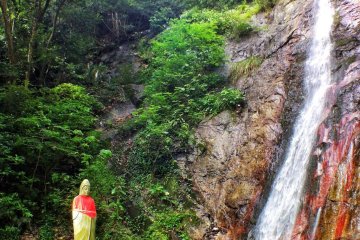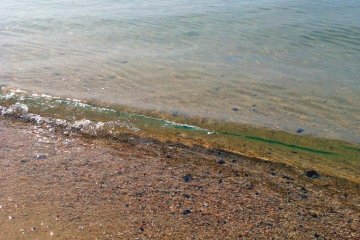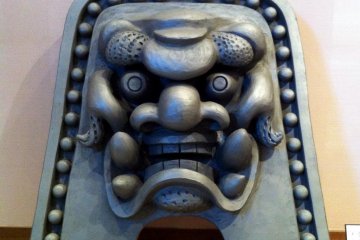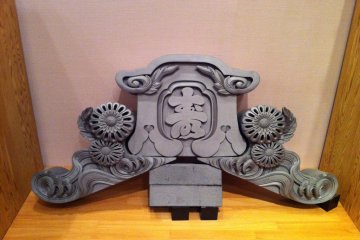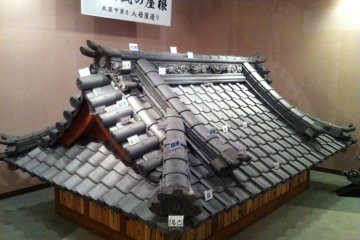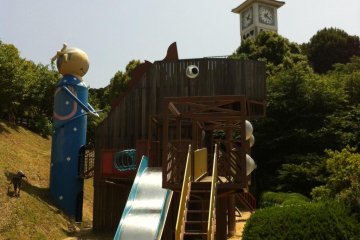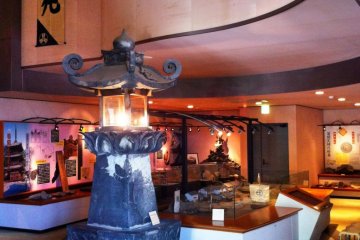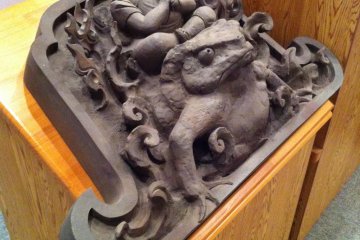When you think of roof tiles, you probably picture unremarkable pieces of baked clay. But in Japan, traditional roof tiles have always been highly decorative, with many types of functional tile and a fantastic array of decorative flourishes. If you've ever wanted to get a closer look at the elaborate tiles on temple roofs, this is your chance.
The town of Kikuma in Imabari has long been a center for tile making, and the road that skirts the Seto Inland Sea through Kikuma is lined with tile factories, many decorated with huge examples of their art. Set back from the main road and hidden entirely from view is a magnificent white building with elaborate tile roofs. This is the Kawara-kan (Tile Hall), a museum devoted to the history and art of tiles. It stands right next to JR Kikuma station, and if you’re going this way by train, it’s well worth getting off to enjoy the museum and the hillside park in which it stands.
The museum costs a very reasonable 200 yen to enter. The exhibits include very well presented sections on how tiles are made, with detailed dioramas, photo panels, illustrations, and lots of real tools, artifacts and every conceivable variety of clay product. Tile making starts with wood carving to make the molds. These are made with extraordinary precision, and they’re things of beauty in themselves.
The building has several floors, each with a different theme. The third floor is dedicated to examples of the decorative tiles typically found on temples and shrines. Many are comical or grotesque, with fantastic creatures reminiscent of Maurice Sendak’s Where the Wild Things Are. Others are very elegant, combining kanji characters with elaborate and realistic flowers. In many cases, both massiveness and delicacy are expressed side by side in a single work. Kikuma tiles are finished with a metallic look which ages gracefully over many years to the appearance of stone. An exhibit which I found particularly interesting is an entire roof on a greatly reduced scale, with the names of all the different types of tile labeled.
The top floor has an exhibition about local designers and artists. There’s a beautiful motorbike and some fine paintings. Anyone with an interest in art, design or architecture will find a mine of interest in this museum and gallery.
The park in which the museum stands is another attraction. It has many different levels, with lawns, flowers, rock gardens, water features, platforms for enjoying the panoramic sea views, and a good selection of those whacky playthings for children in which Japan specializes. There’s a very long roller slide. It’s an absolute ripper for speed and high-G turns, but unless you have some cardboard or something to sit on, it feels like you’ve been caned when you get to the bottom.
Taken together, the Kawara-Kan and park are ideal for a family outing with a picnic.



